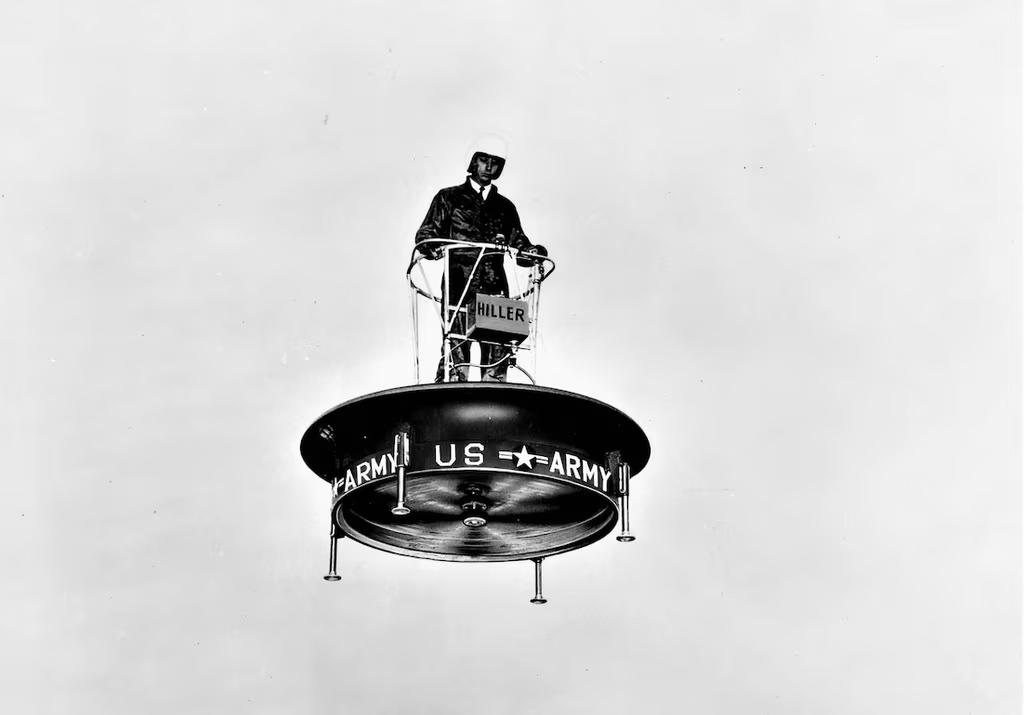Soldiers suspended in the air in moon boots and sniping unsuspecting targets on the ground might sound like a battle tactic from a future war, but such a concept for an Army hovercraft actually traces its roots to the 1950s.
That’s when a rotor-propelled standing platform was picked up by Office of Naval Research, which based its design on National Advisory Committee for Aeronautics engineer Charles Zimmerman’s invention known as the “Flying Shoes.”
The result was a “one-man, twin-engine, flying platform with two counter-rotating rotors turning on vertical axis inside ducted fan,” according to the National Air and Space Museum.
In essence, the platform resembled a flying disk with a guardrail to prevent those riding from falling out.
One piece of promotional material provided to Military Times by the U.S. Army Transportation Museum reads, “It Flies! The Navy Comes Up with A Real ‘Flying Saucer.’”
In 1956, ONR came up with a series of prototype models. Ultimately its 1031-A-1 flew, but the Army wanted a larger version with more thrust. The craft eventually evolved into the Hiller VZ-1 Pawnee before the project was scrapped.
“The extra engines required for redundancy if the primary failed made the platform so heavy that it was impossible for the pilot to control the craft kinesthetically (by leaning), defeating the purpose of the design,” according to the Smithsonian.
As a result, the Army’s interest in the platform waned, and the Hiller hovercraft’s dreams came crashing down.
“Seven Hiller Flying Platforms in all are believed to have been built,” according to “Vertical Challenge: The Hiller Aircraft Story” by Jay Spenser. “Retired after several years of use, the historic first example … is now on view at the Hiller Aircraft Museum in Redwood City, California.”
And while the technology was shelved, a battlefield full of flying soldiers isn’t out of the realm of possibility. DARPA is working to bring military-ready jetpacks to modern combat with its Portable Personal Air Mobility System.
Originally published by Military Times, our sister publication.





